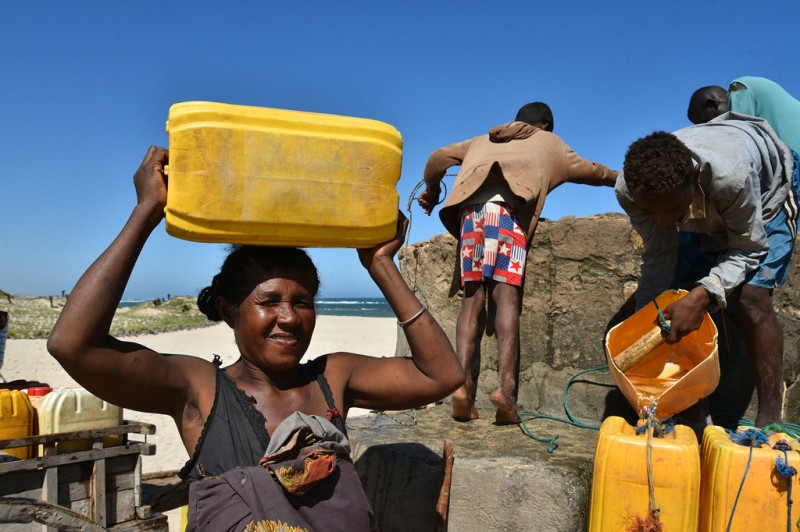People draw water from a well built on Faux Cap’s beach in Madagascar.
About $150 million from the United Nations Central Emergency Response Fund (CERF), the largest allocation ever, was released on Thursday to boost underfunded humanitarian operations across 13 countries.
For the Humanitarian Affairs and Emergency Relief Coordinator, Martin Griffiths, this funding “represents a lifeline for the millions of people caught up in underfunded crises.”
The announcement follows the recent launch of the Global Humanitarian Overview, which predicts that this year 274 million people will need humanitarian assistance, the highest number in decades.
Today, I released $150M from @UNCERF for 13 underfunded humanitarian operations in Africa, the Americas, Asia & the Middle East.
This largest-ever allocation is a lifeline for millions of people caught up in crises where suffering is alarmingly high and resources critically low.
— Martin Griffiths (@UNReliefChief) January 13, 2022
The United Nations and its partners aim to assist 183 million of the most vulnerable people, at a cost of at least $41 billion.
Allocation
The funds will help address the most urgent needs of vulnerable communities.
The relief operations getting the most funds are in Syria, with $25 million. The Democratic Republic of the Congo will receive $23 million, Sudan $20 million, and Myanmar $12 million.
Aid operations in Burkina Faso, Chad and Niger will each get $10 million.
The remainder of the funding will go to Haiti and Lebanon, with $8 million each, Madagascar, $7 million, Kenya and Angola, $6 million each, and finally Honduras, $5 million.
Fast and smart
According to Mr. Griffiths, “CERF funding allows donor contributions to go further, swiftly reaching those who need our help the most.”
For the United Nations, the fund is one of the fastest and smartest ways to help people affected by crises.
It enables timely, effective and life-saving humanitarian action by UN agencies and others to kick-start or reinforce emergency response anywhere required.
Allocation decisions for underfunded emergencies are based on detailed analysis of more than 90 humanitarian indicators and wide consultation with stakeholders.
Since its creation by the UN General Assembly in 2005, the fund has assisted hundreds of millions of people with some $7.5 billion across more than 110 countries and territories, including more than $2.4 billion to underfunded crises.




Comments are closed.